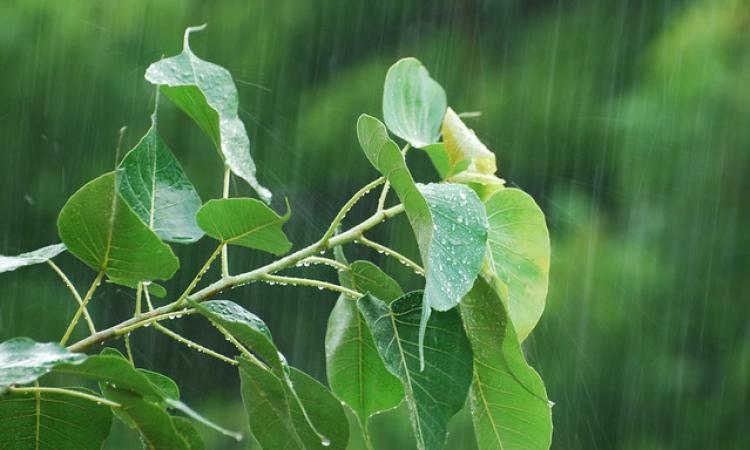
Monsoon makes slowest progress across India in 12 years (source: Times of India)
Indian Meteorological Department (IMD) records show that this year's monsoon has so far been the slowest progressing monsoon in the past 12 years.
The monsoon has currently reached just about 10 to 15% of the country, whereas two-thirds of India is normally under the spell of monsoon by this time of the year. It has now covered Kerala, some parts of south Karnataka, two-thirds of Tamil Nadu and most of northeast India.
The slow progressing monsoon has led to a countrywide rainfall deficit of 44% for the season. The monsoon arrived in Kerala a week later than the normal date, followed by the formation of Cyclone Vayu in the Arabian Sea which took away moisture from the system and stalled the monsoon's progress.
Drought enters week 32 in Marathwada, Maharashtra; villagers reuse bath water for daily chores
As drought intensifies in the Marathwada region of Maharashtra, the residents of Adul village on the border of Beed and Aurangabad district have started reusing their bathwater for daily chores. Residents have stopped using soap and carefully collect the water that is poured over themselves while bathing and the collected water is being used by other family members for washing clothes and utensils.
As per IMD data, Aurangabad has not received any rainfall since December and nine talukas in the district showed groundwater depletion.
Adul is one of the 194 villages in the district where the groundwater depletion has been greater than three metres.
Kerala's groundwater report shows a grim picture
According to a joint study conducted by the Central Ground Water Board (CGWB) and the State Ground Water Department in 2017, the net groundwater availability for the entire state is 5,211.75 million cubic metres (mcm) as against the net groundwater availability of 5,651 mcm assessed during the study conducted in 2013.
Groundwater extraction was found to be the highest in Kasaragod district and the lowest in Wayanad.
Chittur block in Palakkad has been categorised as over-exploited while two blocks, Kasaragod and Malampuzha, have now become critical zones. In 2013, 18 semi-critical blocks were identified in the state but the latest report has put 12 more blocks into this category.
Water no longer an issue for Bundelkhand's Jakhni village
While most of Bundelkhand has been reeling under an acute water crisis for years, there are several villages that took up water conservation efforts, aiming to become self-reliant. About 10 years ago, all the ponds of Jakhni village in Banda district dried up.
Villagers then took on the challenge of reviving five of these ponds in the village.
Initially, the digging of ponds was done under the rural employment scheme (MNREGA), but subsequently the Gram Sabha also helped in desilting works and removing encroachments. At present five ponds in the village are full and residents are getting easy supply of water through tubewells. Similarly, another village in the neighbouring Mahoba district where water scarcity was more severe, realised the importance of the one tubewell that was supplying water to the village. They also took up tree plantation aggressively to ensure groundwater recharge, and have begun working on reviving other tubewells and ponds in the village.
Chennai: High concentration of microplastics found in Kodungaiyur groundwater
A study conducted by researchers from the University of Madras reveals the presence of a high concentration of microplastics in groundwater in and around the Kodungaiyur dumpyard in Chennai. Samples have been collected from 35 places within a 10 kilometre radius of the dumpyard, which is one of the largest in the city. Few samples have concentration of microplastics as high as 22 particles per 150 ml, while the acceptable levels are two particles per litre. The study has cited rampant digging of borewells as the major cause of leakage of plastics accumulated in the dumpyard, into the groundwater.
This is a roundup of important news published between June 19 - 25, 2019. Also read policy matters this week.
/articles/slow-monsoon-causes-countrywide-rainfall-deficit-44-percent